The WRMarketplace is created exclusively for AALU Members by the AALU staff andGreenberg Traurig, one of the nation’s leading tax and wealth management law firms. The WRMarketplace provides deep insight into trends and events impacting the use of life insurance products, including key take-aways, for AALU members, clientsand advisors.
The AALU WRNewswire and WRMarketplace are published by the Association for Advanced Life Underwriting® as part of the Essential Wisdom Series, the trusted source of actionable technical and marketplace knowledge for AALU members— the nation’s most advanced life insurance professionals.
Thursday, 21 April 2016 WRM#16-16
TOPIC: Getting It Right – Establishing a Family Limited Partnership or LLC for All the Right Reasons.
MARKET TREND: The IRS continues to challenge family limited partnerships and limited liability companies, but good facts can produce great outcomes.
SYNOPSIS: Family limited partnerships (“FLPs”) and limited liability companies (“LLCs”, collectively, “FLPs/LLCs”) are often used for legacy management. The failure to have a legitimate nontax reason for establishing the FLP/LLC or to adhere to the formalities of managing the FLP/LLC, however, can cause inclusion of the underlying assets in the owner’s estate despite planning for a different outcome.
TAKE-AWAYS: FLPs/LLCs are not a “form it and forget it” proposition. Careful planning and on-going administration is required to establish the good facts necessary to overcome an IRS challenge and application of IRC § 2036(a), which would include the assets in the client’s estate. Clients considering FLPs/LLCs as part of a wealth management and preservation program must work closely with experienced advisors who can assist with the formation and ongoing management of the entity.
PRIOR REPORTS: 2013-10.
MAJOR REFERENCES: Estate of Purdue v. Commissioner, T.C. Memo 2015-249 (December 28, 2015); Estate of Holliday v. Commissioner, T.C. Memo 2016-51 (March 17, 2016); IRC §2036(a).
FLPs/LLCs provide families with a host of benefits:centralized family wealth management and succession, economies of scale relative to investing power, the development of a coherent family investment philosophy, and confidentiality and creditor protection for family members. Unfortunately, they are also frequently the source of IRS interest. The IRS continues to use IRC §2036(a) as a way to pull assets transferred to a FLP/LLC into a decedent’s gross estate for estate tax purposes. This argument has been pursued for over twenty years and despite an overall lack of IRS success, the resulting case law provides valuable guidance on managing the potential issues associated with the use of FLPs/LLCs.
THE BASICS OF IRC § 2036(a)
IRC § 2036(a) provides that assets transferred by an individual during their lifetime will be included in his or her taxable estate if the individual, explicitly or by implied agreement, retained until death the possession or enjoyment of, or the right to the income from, the transferred asset. The only exception to inclusion is if the asset was transferred for “adequate and full consideration in money or money’s worth” (the “bona fide sale exception”).
In the typical FLP/LLC structure, the taxpayer transfers assets to the FLP/LLC in return for partnership or membership interests in the entity. The FLP/LLC interests may eventually be used to make gifts or fund trusts. However, if the taxpayer owns an interest in the FLP/LLC at death, the IRS may use IRC § 2036(a) to pull all assets in the FLP/LLC back into the taxpayer’s gross estate by asserting that the taxpayer retained an interest in the transferred assets.
A long line of court cases have discussed the “transfer for adequate and full consideration” exception to IRC § 2036(a). Two recent cases provide additional guidance and a cautionary tale.
PURDUE V. COMMISSIONER: GOOD FACTS – GREAT OUTCOMES
On December 28, 2015, the Tax Court issued its ruling in Estate of Purdue v. Commissioner,1 illustrating that crossing t’s and dotting i’s are critical to meeting the
bona fide sale exception while providing a roadmap to qualifying transfers for the exception.
Facts: Mr. and Mrs. Purdue accumulated substantial assets over their lifetimes, a significant portion of which consisted of marketable securities and an interest in a commercial building. In 2000, Mr. and Mrs. Purdue engaged an attorney for estate and gift planning. The attorney recommended an LLC to hold their securities and the building to centralize management of the assets and to apply valuation discounts. The attorney provided Mr. and Mrs. Purdue with a memorandum and a draft LLC operating agreement which provided that the purposes of the LLC were to “(1) consolidate the management and control of certain property and improve the efficiency of the management by holding the properties in a single, flexible entity; (2) avoid fractionalization of ownership; (3) keep ownership of the assets within the extended family; (4) protect assets from unknown future creditors; (5) provide flexibility in management of assets not available through other business entities; and (6) promote education of, and communication among, members of the extended family with respect to financial matters.” These purposes were reiterated in the final operating agreement.
Mr. and Mrs. Purdue formed the LLC, retaining the right to income and distributions in proportion to their LLC ownership percentage. After the LLC was formed, the attorney sent another memorandum listing four nontax business reasons for the LLC: (1) limited liability; (2) pass-through income taxation; (3) minimal formalities; and (4) the LLC being an ideal entity for owning real estate.
Mr. and Mrs. Purdue transferred $22 million in marketable securities, their interest in the commercial building valued at about $900,000, a promissory note payable by one of their children in the amount of $375,000, and a certificate of deposit worth about $865,000, to the LLC in exchange for 100% of the membership interests.
The LLC retained an investment manager who consolidated the investments and, together with the Purdues and their children, developed an overall investment strategy. The children met regularly with the investment manager and held annual meetings to discuss LLC investments and distributions to the LLC members.
After Mr. Purdue’s death in 2001, Mrs. Purdue made gifts of LLC membership interests to an irrevocable trust for the children. Following Mrs. Purdue’s death in 2007, the IRS determined that IRC § 2036(a) applied and that the LLC assets were included in her estate, despite the gifts.
Holding: The estate and IRS agreed that Mrs. Purdue had transferred assets to the LLC. However, the estate argued that the transfer qualified for the bona fide sale exception. In analyzing whether Mrs. Purdue’s transfer to the LLC qualified for the exception, the Court divided the exception into two prongs: (i) whether the transaction qualified as a bona fide sale, and (ii) whether Mrs. Purdue received adequate and full consideration.
- Bona Fide Sale. The bona fide sale prong requires that there be a legitimate and significant nontax reason for creating the LLC. Objective evidence must indicate that the nontax reason was a significant factor that motivated, rather than justified, the creation of the LLC. While the estate asserted a number of nontax motives,2 the Court focused on consolidation of the management of the assets as a legitimate and actual nontax motive for transferring the assets to the LLC, concluding that the bona fide sale prong of the exception was satisfied. In making that determination, the Court also looked at a number of supportive factors.
- Mrs. Purdue was not financially dependent on the LLC distributions – she retained substantial assets outside of the LLC to pay her living expenses.
- There was no commingling of Mrs. Purdue’s funds with the LLC’s funds.
- LLC formalities were respected – the LLC maintained its own bank accounts and held meetings at least annually with written agendas, minutes, and summaries.
- Mr. and Mrs. Purdue actually transferred the assets to the LLC.
- Mr. and Mrs. Purdue were in good health at the time the LLC was formed and the assets transferred.
- Adequate and full Consideration. The Court also found that Mr. and Mrs. Purdue received adequate and full consideration for the transfer of assets to the LLC as they received LLC interests proportional to the value of the property they transferred to it.
The Court concluded that the transfer of property to the LLC qualified for the bona fide sale exception. Accordingly, IRC § 2036(a) did not apply to include the underlying assets in Mrs. Purdue’s gross estate – a victory for the taxpayer.
HOLLIDAY V. COMMISSIONER: BAD FACTS – TERRIBLE OUTCOMES
Estate of Holliday v. Commissioner3 is the most recent Tax Court case dealing with an IRS attempt to pull FLP assets back into the transferor’s taxable estate at death. Bad facts resulted in an IRS win.
Facts: Mrs. Holliday died in 2009 at age 84. Her husband predeceased her in 1999. The Hollidays had accumulated substantial assets during their lifetimes. Upon the husband’s death, his assets were placed in three trusts for Mrs. Holliday’s benefit. Mrs. Holliday also had substantial assets of her own.
Several years after her husband’s death, Mrs. Holliday moved into a nursing home, at which time she gave her two sons a power of attorney to manage her financial affairs. One son lived nearby and managed her day-to-day financial needs, and the other son managed her financial assets using the power of attorney. In 2006, with the guidance of her sons and her attorney, Mrs. Holliday created a FLP and an LLC that served as the general partner of the FLP. Mrs. Holliday contributed marketable securities to the FLP. On the same day, Mrs. Holliday transferred all her LLC interests to her two sons and gave 10% of her interest in the FLP to an irrevocable trust, leaving her with an 89.9% limited partnership interest in the FLP, which she held until death.
The partnership agreement required that all cash in excess of the FLP’s current operating needs was to be distributed to the partners. However, after formation of the FLP, the FLP made only one pro rata distribution of $35,000 to the partners. No other distributions were made because, as one son testified, no one needed a distribution. Following Mrs. Holliday’s death, the IRS determined that IRC § 2036(a) applied and that all of the underlying FLP assets should be included in her estate.
Holding: The Court agreed with the IRS, ruling that the FLP assets were included in Mrs. Holliday’s estate because (i) she had retained rights to income from the FLP assets and (ii) there was not a bona fide sale for adequate and full consideration, as there was no legitimate and significant nontax reason for the transfer to the FLP.
- Retained Interest. Based on the requirement that excess income be distributed to the partners (but wasn’t) and testimony that that a distribution would have been made if it were needed, the Court found that there was an implied agreement that Mrs. Holliday retained the right to the possession or enjoyment of, or the right to the income from, the property she transferred to the FLP.
- Bona Fide Sale for Adequate and Full Consideration. The Court also found that the asserted nontax reasons for establishing the FLP – protection from trial attorney extortion, undue influence of caregivers, and preservation of assets – were not legitimate and significant.
- Mrs. Holliday had never been sued, and the risk that she would be vulnerable to trial attorney extortion was minimal.
- The Court was not convinced that protection from caregivers was necessary as one son lived close by and visited Mrs. Holliday frequentlyand both children were involved in managing her financial affairs.
- Preservation of assets was not a convincing reason as Mrs. Holliday’s predeceased husband’s assets were in trust, and there were no issues regarding the management of those assets. Mrs. Holliday also was not involved in selecting the structure used to preserve the assets.
- Other Factors Considered by the Court. The Court also considered the fact that the partnership failed to act like a true partnership. It did not maintain booksand records, the partners did not have formal meetings, no minutes were kept, and the partnership failed to adhere to the terms of the partnership agreement requiring distributions of income.
BEST PRACTICES – GETTING IT RIGHT
Establishing good facts is the key to successfully using an FLP/LLC as part of a legacy management program and avoiding the inclusion of the entity’s underlying assets in the client’s taxable estate.
As discussed above, to establish that there was a bona fide sale, there must be a legitimate and substantial nontax motive for creating and transferring assets to the FLP/LLC. The below chart provides examples of such nontax motives.
|
Sample Nontax Purpose |
|
Cases show that merely asserting the reasons for establishing the FLP/LLC is insufficient to meet the bona fide sale exception. Actions speak louder than words; accordingly, the FLP/LLC must truly be operated like a business post-formation. Below is a non- exhaustive list of actions that should be considered by clients and advisors in forming and managing the FLP/LLC.
| Formation and Management of the FLP/LLC |
|
Clearly document all nontax purposes for formation and use |
|
Follow all required state formalities when establishing the FLP/LLC and ensure the entity is valid under state law
|
Transfer the assets to the FLP/LLC on a timely basis
|
| Formation and Management of the FLP/LLC |
|
| Issue ownership interests in the FLP/LLC to the partner/member only AFTER the assets are transferred to the FLP/LLC |
Run the FLP/LLC like a business formed by unrelated parties:
|
| Formation and Management of the FLP/LLC |
Eliminate any control the taxpayer may have over the FLP/LLC that could be deemed equivalent to retaining possession of the assets transferred to the FLP/LLC or its income
|
| Do not allow the client to be financially dependent upon distributions from the FLP/LLC for his/her support |
| Creation of the FLP/LLC structure should preferably be undertaken while the client is in good health |
| Gifts of FLP/LLC interests should not necessarily be made immediately after formation |
TAKE AWAYS
- FLPs/LLCs are not a “form it and forget it” proposition. Careful planning and on- going administration is required to establish the good facts necessary to overcome an IRS challenge and application of IRC § 2036(a), which would include the assets in the client’s estate.
- Clients considering FLPs/LLCs as part of a wealth management and preservation program must work closely with experienced advisors who can assist with the formation and ongoing management of the entity.
DISCLAIMER
This information is intended solely for information and education and is not intended for use as legal or tax advice. Reference herein to any specific tax or other planning strategy, process, product or service does not constitute promotion, endorsement or recommendation by AALU. Persons should consult with their own legal or tax advisors for specific legal or tax advice.
WRM #16-16 was written by Greenberg Traurig, LLP
Jonathan M. Forster
Martin Kalb
Richard A. Sirus
Steven B. Lapidus
Rebecca Manicone
Counsel Emeritus
Gerald H. Sherman 1932-2012
Stuart Lewis 1945-2012
TCO 361897335v3
1 T.C. Memo 2015-249.
2 The estate argued that Mrs. Purdue had the following seven nontax motives for transferring the property to the LLC: (1) to relieve Mr. and Mrs. Purdue from the burdens of managing their investments; (2) to consolidate investments with a single adviser to reduce volatility according to a written investment plan; (3) to educate their five children to jointly manage a family investment company; (4) to avoid repetitive asset transfers among multiple generations; (5) to create a common ownership of assets for efficient management and meeting minimum investment requirements; (6) to provide voting and dispute resolution rules and transfer restrictions appropriate for joint ownership and management by a large number of family members; and (7) to provide the Purdue children with a minimum annual cashflow.
3 T.C. Memo 2016-15.






